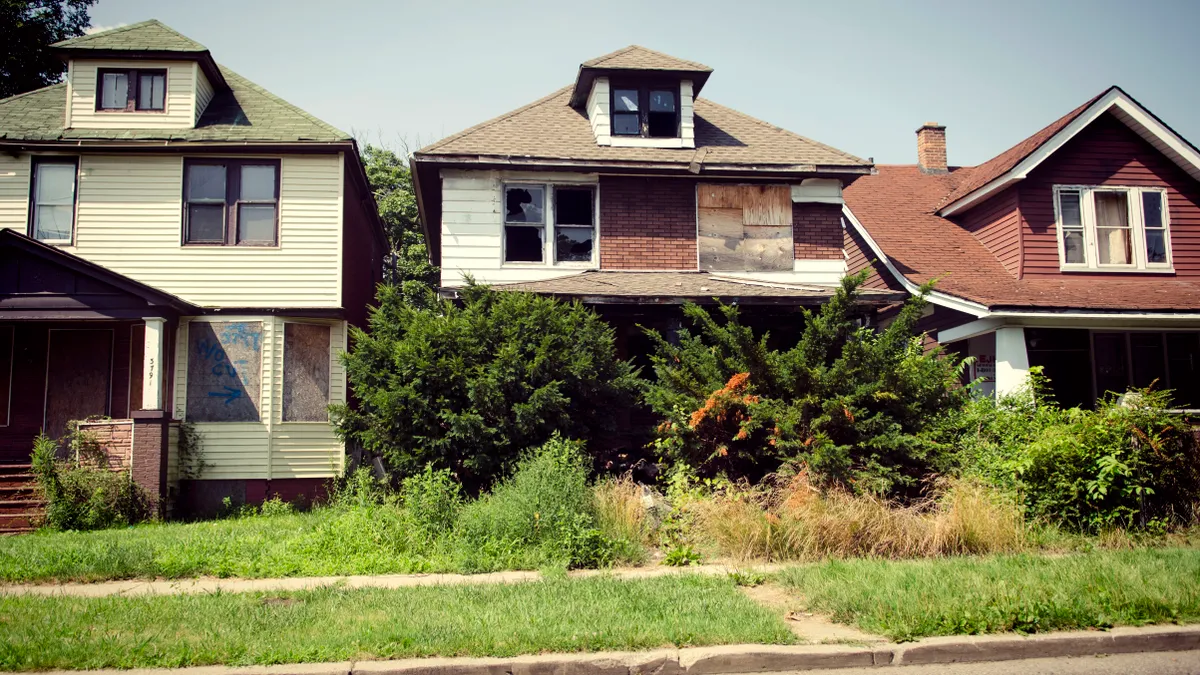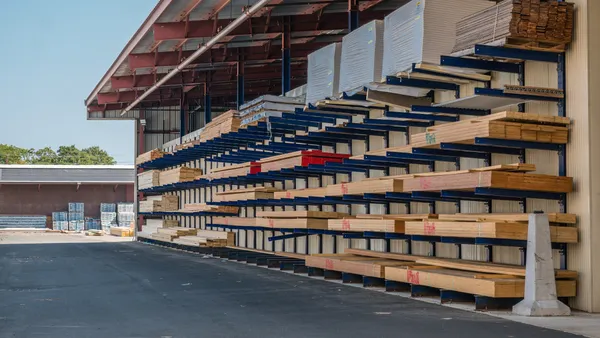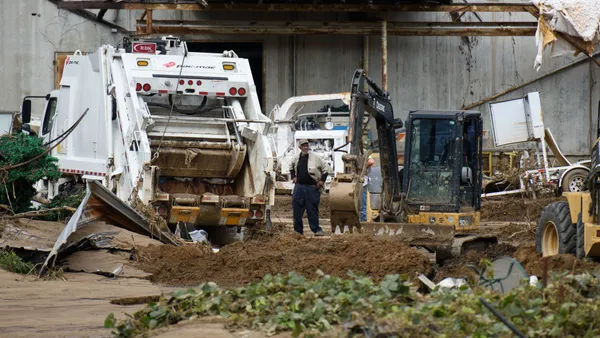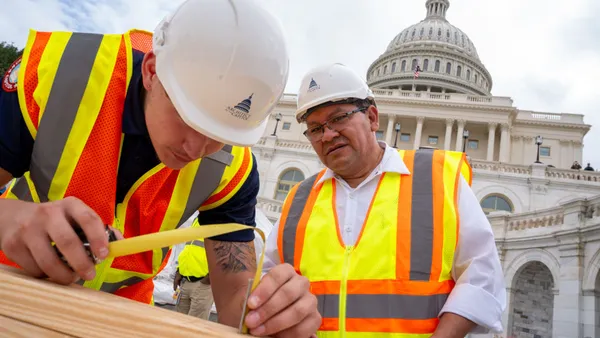Dive Brief:
-
Blight in individual residences and entire neighborhoods does more than damage the image of the streetscape — it can negatively impact residents’ physical and mental health, according to a new report from the Urban Institute that explores ways to address housing neglect.
-
Housing that exposes tenants to poor indoor air quality, mold, lead and pest infestations can contribute to asthma and respiratory illnesses, lead poisoning and learning and behavioral problems, according to an analysis of the report by CityLab.
- At least 30 million housing units in the U.S. contain major physical or health hazards, including insufficient heating as well as roofing and other leakage problems. These issues disproportionately impact poor and low-income households, children, people of color and those with disabilities or chronic illnesses.
Dive Insight
Because people tend to spend most their time indoors, particularly in their residences, their homes and neighborhoods play key roles in their overall well-being. Poor and low-income children face developmental problems and long-term damage to their physical and mental health if they are raised in blighted areas.
Advocates are pushing back. A recent lawsuit lodged against Fannie Mae in a California federal district court alleges the government-backed mortgage lender does not maintain and market foreclosures in predominantly black and Latino neighborhoods to the same levels as it does for those in predominantly white neighborhoods. The lawsuit followed an investigation that found the average number of exterior maintenance deficiencies in foreclosures among black and Latino neighborhoods was double that of white neighborhoods.
Other such efforts that could help offset long-standing discrimination in the housing industry have sprung up within the past few years, including the Obama administration's rules requiring cities to demonstrate their plans to use federal funds to minimize racial disparity in housing. HUD, in turn, has made data on housing patterns public in order to identify where better housing policy is needed.
For more housing news, sign up for our daily residential construction newsletter.














